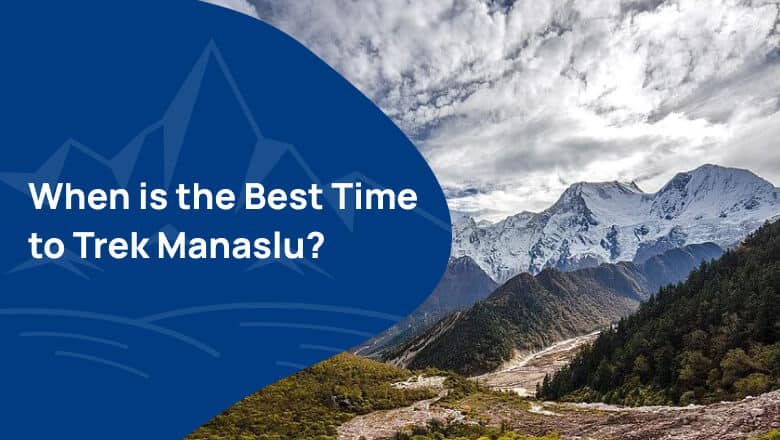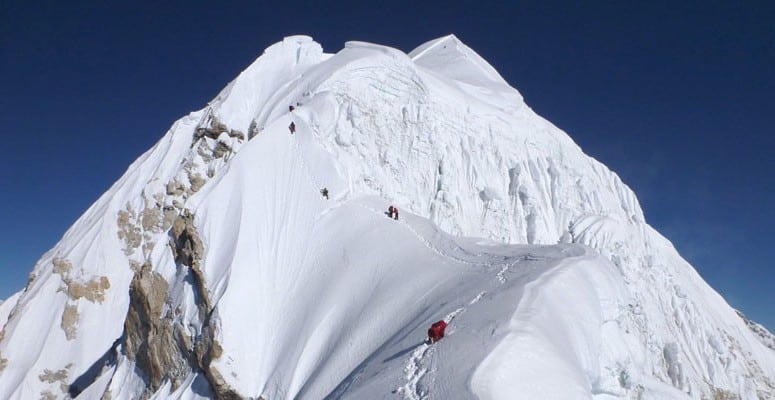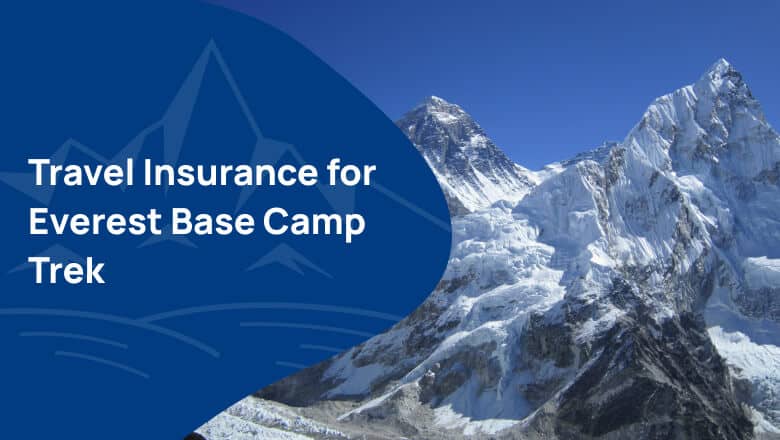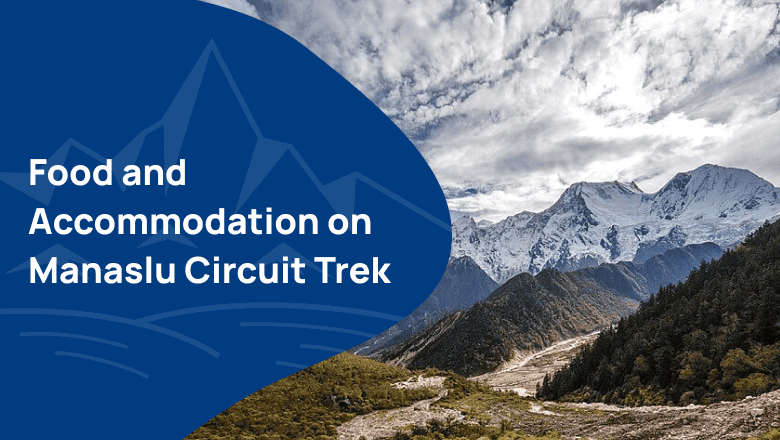Embarking on an exciting expedition into the heart of the Himalayas feels like a thrilling adventure beckoning us. Yet, we’re confronted with a vital inquiry today: What’s the best time to trek to Manaslu?
As someone who has been drawn to the Himalayas and led many people along their cold trails, this question is very important to me. The answers to this question are as diverse and interesting as the mountain’s beautiful scenery.
I’ve learned about the Himalayan seasons from my travels. I’ve witnessed a mesmerizing dance in the Himalayas’ weather patterns. Manaslu, the world’s highest peak, is relatively difficult and fascinating to climb. This trip’s season can greatly impact it.
Through my many journeys across the broad expanse of the Himalayas and various parts of the world, I have understood how crucial it is to plan and prepare well. Therefore, when thinking about the perfect time to hike Manaslu, I lean on these past experiences and the knowledge I have gained from them.
So, let’s explore this subject together, looking at each season and what it brings, to discover the best time for an unforgettable journey to Manaslu.
Contents
- Temperature and Precipitation in the Manaslu Circuit
- Best Season for Manaslu Trek
- Problems Faced During Peak Crowd Seasons
- Other Factors to Consider
- Conclusion
- FAQs
- 1. How difficult is Manaslu Trek?
- 2. How long is the Manaslu trek duration?
- 3. Why is the Manaslu trek considered one of the most challenging treks?
- 4. How much does it cost for the Manaslu trek?
- 5. Is the Manaslu trek a worthy trek?
- Get in Touch with Our Trekking Experts Today
- Our Manaslu Trek Packages
Do you have any question about trip to Nepal?
Tell us about your trip to Nepal and what you expect from it. We will answer your questions in 24 hours and help you design a trip with a comfortable itinerary to meet your needs best.
Temperature and Precipitation in the Manaslu Circuit
The Manaslu Region experiences a wide range of temperature and precipitation conditions due to its geographical location and elevation changes. In the lower regions, daytime temperatures usually fall between 10-20°C (50-68°F), while the nighttime can bring freezing temperatures, particularly as the altitude increases. Precipitation patterns are largely impacted by the monsoon season, spanning from June to September, causing significant rainfall and increasing the trek’s difficulty.
For a detailed perspective on monthly temperature, precipitation, and specific weather conditions, refer to the attached table, which will guide you in understanding the region’s climate throughout the year.
| Month | Temperature (°C) | Precipitation (mm) | Weather Conditions |
|---|---|---|---|
| January | -8 to 6 | 50 to 100 | Cold, dry and snowy |
| February | -5 to 8 | 50 to 100 | Cold, dry and snowy |
| March | -3 to 11 | 100 to 200 | Mild with occasional rain and snow |
| April | 2 to 16 | 50 to 100 | Mild with occasional rain and snow |
| May | 7 to 19 | 50 to 100 | Mild with occasional rain and snow |
| June | 11 to 21 | 100 to 200 | Warm with occasional rain and thunderstorms |
| July | 12 to 22 | 200 to 300 | Warm with occasional rain and thunderstorms |
| August | 12 to 21 | 200 to 300 | Warm with occasional rain and thunderstorms |
| September | 9 to 19 | 100 to 200 | Mild with occasional rain and snow |
| October | 3 to 15 | 50 to 100 | Mild with occasional rain and snow |
| November | -3 to 10 | 50 to 100 | Cold, dry and occasionally snowy |
| December | -7 to 7 | 50 to 100 | Cold, dry and snowy |
Please note that weather conditions vary, and checking the up-to-date weather forecast is always recommended before starting a trek.
Explore our comprehensive guide on Manaslu Trekking to learn about the factors that affect the trek, such as challenges, trip highlights, average costs and tips to conquer the obstacles.
Best Season for Manaslu Trek
The best season for Manaslu Trek is during autumn and spring. These seasons offer ideal weather conditions and breathtaking landscapes, making it the perfect time to embark on this adventure. Let’s dig into details about the best seasons for Manaslu Trek:
1. Spring (Pre-Monsoon) Season
March to May is a popular time to trek in the Manaslu region. The weather is generally pleasant, with temperatures gradually warming up. The skies are clear, offering stunning views of the mountains. The trails are also alive with blooming flowers, including the famous rhododendrons, adding a touch of color to the landscape. Trekkers increase in March, with the highest numbers usually seen in April and May.
If you wish to trek Manaslu during this season, you can encounter the following events/festivals:
- Ghode Jatra: A Kathmandu-specific festival where the Nepal Army performs horse races at the parade ground (Tundikhel) to ward off the demon Gurumapa.
- Maha Shivaratri: Particularly lively at Kathmandu’s Pashupatinath Temple, where thousands of sadhus (Hindu holy men) gather to worship Lord Shiva.
- Holi: The festival of spring, where water and coloured powders are thrown around in celebration.
2. Monsoon Season
Trekking in Manaslu during the rainy months of June, July, and August can be exciting. There are beautiful views and charming villages in the area. But the weather this time is important. Rain makes paths slippery and wet. It’s essential to have rain gear and strong shoes. The monsoon delivers lush vegetation and lively blossoms, creating a lovely atmosphere. During the monsoon, trekking in Manaslu takes extra care and planning, but seeing this gorgeous place is worth it.
If you wish to trek Manaslu during this season, you can encounter the following events/festivals:
- Janai Purnima/Rakshya Bandhan – Janai Purnima is a Hindu festival celebrated nationwide, with family get-togethers and feasts of Kwati or sprout lentils.
- Gai Jatra – In Kathmandu Valley, Gai Jatra is held to remember the death of loved ones.
Book a Manaslu Circuit Trek Now!

Manaslu stands tall as the eighth highest mountain in the world. With Annapurna to the west and Ganesh Himal to the right, it forms a mountain range that is truly spectacular to behold. While most people keep their eye on Everest, this circuit goes underappreciated. However, it is great news for thrill-seekers like you as you will be able to trek here in peace and enjoy the quiet beauty along the way. You will be greeted with magnificent peaks like Manaslu, Cheo Himal, Himlung Himal, Annapurna II, Kang Guru, Gyaji Kang, and Nam Jung. Setting foot on the highest point…
3. Autumn (Post-Monsoon) Season
September to November is the most popular and crowded time to trek Manaslu. The monsoon rains from June to August clear the dust and haze from the air, resulting in exceptional mountain visibility. The weather is typically stable and dry, with moderate daytime temperatures. The trails are bustling with trekkers in October and November, making it the peak crowd season.
If you wish to trek Manaslu during this season, you can encounter the following events/festivals:
- Dashain: One of the biggest and most important festivals celebrated by the Hindus of Nepal for 15 days.
- Tihar: Tihar, also known as Deepawali, is another biggest festival of Hindus after Dashain
4. Winter Season
Manaslu region is beautiful in September, October, and November. The area’s beautiful mountains and quiet sceneries will delight adventurers. However, colder temperatures and snowfall make trekking during winter challenging. Trekking gear must keep you warm and safe. Beware of ice trails. Trekking in this season offers beautiful scenery, solitude, and obstacles. See Manaslu’s winter beauty and make memories.
If you wish to trek Manaslu during this season, you can encounter the following events/festivals:
- During Maghe Sankranti, Nepalese culture is at its best. It’s called the ‘holy time of transition.’
- Tamu & Sonam Lhosar: Manaslu’s biggest celebration Lhosar is celebrated by different ethnic groups on different days throughout winter treks.
In simple terms, if you plan to trek Manaslu and avoid the most crowded times, you should avoid the peak months of April, May, October, and November. Conversely, these months could be your best bet if you enjoy a more social trekking experience. However, you should always be prepared for variable weather conditions and remember that the high-altitude environment can be challenging even during the peak season.
Problems Faced During Peak Crowd Seasons
Trekking the Manaslu Circuit during peak seasons can indeed present specific challenges due to the increased number of trekkers. Here are some of the problems that trekkers might face during the peak crowd seasons:
1. Accommodation Shortage
During the peak season, the tea houses along the Manaslu Circuit Trek can get fully booked quickly. This could mean you might not get your preferred accommodation or, in worst-case scenarios, struggle to find a place to sleep for the night.
2. Trail Congestion
With more trekkers, there can be congestion, particularly at narrow or challenging trek sections. This can slow down progress and make the trek less enjoyable.
3. Limited Privacy
The increased number of trekkers during peak season means less privacy on the trail and in the tea houses. For those seeking solitude and quiet, this could detract from the experience.
4. Environmental Impact
The high number of trekkers can put pressure on the local environment. Despite best efforts, litter can increase, and local resources like water can become strained.
5. Decreased Flexibility
With more people on the trail, changing your plans needs more flexibility. For example, if you’re feeling tired and want to stop early for the day, it might not be possible if the nearby accommodations are already fully booked. Similarly, popular viewpoints can get crowded, limiting the opportunity for spontaneous stops.
While these challenges seem daunting, good planning can help mitigate most of them. Therefore, booking your accommodations in advance, being respectful of the environment, and being patient and flexible can ensure an enjoyable trek, even during the peak season.
Check out our article on “Manaslu Circuit Trek Difficulty: What You Need to Know” for valuable insights and tips to tackle the trek with confidence.
Other Factors to Consider
There are several factors to consider when planning your trek to ensure a safe, enjoyable, and successful journey. Here is a comprehensive guide to the factors you should keep in mind:
1. Physical Fitness and Preparation
Visiting Manaslu outside of peak trekking season is a big deal. “Physical Fitness” shines here. Why? Health is crucial regardless of when you go trekking. However, monsoons and winters increase its worth. Rain and snow make routes slippery and could block the trail. If you’re not physically ready, these conditions could easily turn your dream walk into a terrifying encounter. Therefore, you must be physically fit to enjoy the hike and be safe on these rough trails to make your Manaslu trip memorable!
2. Altitude Sickness
“Altitude Sickness” is as crucial as physical fitness when visiting Manaslu. Off-seasons worsen it. During these seasons, many businesses, including healthcare facilities, operate at a lower capacity, which might reduce altitude sickness support. Altitude sickness symptoms, prevention, and treatment are necessary throughout the year. Altitude sickness may ruin a Manaslu walk in any season if you are not well aware and prepared for it.
3. Guide/Porter
A guide/porter is a must to trek in the Manaslu region, but they are much more crucial in the off-season. Their terrain knowledge is vital when snow or landslides block roadways. They ensure trail safety. Their experience with weather and health emergencies adds security. Even at off-peak hours, you must hire a guide/porter to enjoy the Manaslu trek safely.
4. Equipment and Clothing
“Equipment and Clothing” are vital for off-season Manaslu hiking. Poor clothing and gear can cause discomfort and danger. Winter hiking boots and gear prevent hypothermia and frostbite. Trekking poles or headlamps are necessary for navigating in snowy or low-light conditions. Thus, comfortable and safe Manaslu walking requires adequate clothing and gear.
5. Food and Water
In the off-season, “Food and Water” are important for any climb, including the Manaslu trek. Due to fewer customers, some teahouses and businesses may close. So lodging may be harder to find. Dehydration and energy depletion from low food and water intake may affect performance and cause serious health issues. In addition, winter water freezes complicate things. Thus, trek preparation requires a reliable food and water source in the off-season.
Conclusion
Embarking on a trek around the Manaslu Circuit delivers a unique mix of the Himalayas’ natural splendor and rich cultural traditions. However, this thrilling journey also presents certain challenges, including crowded trails and potential accommodation shortages. Hence, meticulous planning and early reservations are vital for a successful expedition.
Moreover, trekking in the Manaslu region demands a high level of physical fitness, careful precautions against altitude sickness, and proper permits. A licensed guide’s assistance, adequate gear, insurance, and respect for local customs and traditions are also paramount.
Environmental considerations are a must to keep the adventure sustainable. When these factors are considered, the journey can become an unforgettable experience, offering majestic views and fostering a deep connection with nature.
FAQs
1. How difficult is Manaslu Trek?
The Manaslu Trek, a moderately tricky expedition suitable for seasoned trekkers with high-altitude experience, involves steep inclines and declines, crossing mountain passes like the 5,160-meter Larkya La Pass, and navigating rugged, rocky terrain, narrow paths, and areas prone to landslides.
However, with adequate physical fitness, acclimatization, and regular cardio exercises like running or cycling to build endurance, most people can successfully complete the trek, provided they also rest and acclimate appropriately to prevent altitude sickness.
2. How long is the Manaslu trek duration?
The Manaslu Trek, a moderately tricky expedition suitable for seasoned trekkers with high-altitude experience, involves steep inclines and declines, crossing mountain passes like the 5,160-meter Larkya La Pass, and navigating rugged, rocky terrain, narrow paths, and areas prone to landslides.
However, with adequate physical fitness, acclimatization, and regular cardio exercises like running or cycling to build endurance, most people can successfully complete the trek, provided they also rest and acclimate appropriately to prevent altitude sickness.
3. Why is the Manaslu trek considered one of the most challenging treks?
The Manaslu trek is considered one of the most challenging due to several factors. First, its duration is substantial, typically 14 to 18 days, demanding physical endurance and mental stamina.
Secondly, the trek involves climbing to high altitudes of over 5000 meters, which can lead to altitude sickness if not properly acclimatized. The terrain can also be rugged, with steep, rocky paths and snow-covered trails in some seasons.
Lastly, the remote location of the trek means fewer amenities and facilities compared to more popular routes, requiring trekkers to be more self-sufficient. Yet, despite the challenges, the trek is highly rewarding, offering stunning views and a rich cultural experience.
4. How much does it cost for the Manaslu trek?
The cost for the Manaslu Trek can fluctuate based on elements like the trekking company you choose, your selected route, and the quality of service. Generally, you can anticipate shelling out anywhere from $1000 to $2500 per person for a trek with a guide.
If you’re considering embarking on the Manaslu Trek and would like to understand the associated costs. In that case, I recommend checking out this article, “Manaslu Circuit Trek Cost” which offers in-depth guidance regarding all potential expenses for this journey.
5. Is the Manaslu trek a worthy trek?
Yes, the Manaslu Trek is widely considered a worthy trek. Despite its challenges, it offers a wide variety of rewards. The trek takes you through remote and unspoiled areas of Nepal, providing an authentic experience with fewer crowds compared to more popular treks like Everest Base Camp Trek or Annapurna Circuit Trek.
Our Manaslu Trek Packages
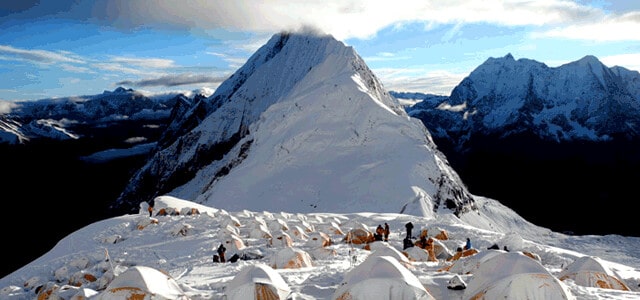
It is a well-known fact that Nepal is a country full of mountains. Not just mountains, but peaks above 8000 meters. Mt. Manaslu is one of them. It is the eighth highest mountain in the world, with an astounding height of 8163 meters. Climbers claim it is one of the similar technical as Mt. Cho- Oyu 8201m and Mt. Shishapangma 8013 m climb. It is a remote and stunning 8000er perfectly suited for professional…

The Tsum Valley trek is an excellent gateway that takes you on a cultural journey and is famously known as ‘the hidden valley.’ The name itself comes from the Tibetan word ‘Tsombo,’ meaning vivid, which perfectly encapsulates your trekking experience. You will get a warm welcome by snowy peaks like Mt. Ganesh and Manaslu. From the first day of the trek itself, the rocky terrains and stone ridges will add the challenge and thrill…

Manaslu stands tall as the eighth highest mountain in the world. With Annapurna to the west and Ganesh Himal to the right, it forms a mountain range that is truly spectacular to behold. While most people keep their eye on Everest, this circuit goes underappreciated. However, it is great news for thrill-seekers like you as you will be able to trek here in peace and enjoy the quiet beauty along the way. You will…

